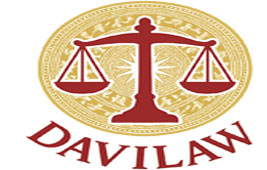What is the difference between a joint stock company and a public company?
Below, are some criteria to help distinguish a joint stock company from a public company:

| Criteria | John Stock Company | Public Company |
| Concept |
A joint-stock company is a type of enterprise in which: - The charter capital is divided into equal parts known as shares; - Shareholders may be organizations or individuals; the minimum number of shareholders is 03, and there is no maximum limit; - Shareholders are only liable for the debts and other property obligations of the enterprise to the extent of the capital they have contributed to the enterprise; - Shareholders have the right to freely transfer their shares to others, except in cases specified in Clause 3 of Article 120 and Clause 1 of Article 127 of the 2020 Law on Enterprises. (Clause 1, Article 111, Law on Enterprises 2020) |
A public company is a joint-stock company that falls into one of the following two cases: - The company has a charter capital of 30 billion VND or more and at least 10% of the voting shares are held by at least 100 investors who are not major shareholders; - The company has successfully offered shares to the public for the first time through registration with the State Securities Commission in accordance with the provisions of Clause 1, Article 16 of the 2020 Law on Enterprises. (Clause 1, Article 32, 2019 Securities Law) |
| Cost of maintaining the company | Usually the management costs of a joint stock company are less than those of a public company. | The management costs of a public company are higher than those of a joint stock company because of its more complex organizational and management structure and the fact that it usually has more shareholders. In addition, a public company must also incur costs to meet financial reporting and disclosure requirements. |
| Number of shareholders | The minimum number of shareholders is 03 and there is no limit on the maximum number (point b, clause 1, Article 111 of the Law on Enterprises 2020). | Usually there are more than 100 shareholders. There is no maximum limit. |
| Obligation to disclose information | Mainly obliged to submit periodic reports on activities to the licensing authorities which are the Department of Planning and Investment, Tax Authority, Labor Authority and Statistics Authority. | Obliged to disclose information to the Department of Planning and Investment, Tax Authority, Labor Authority, Statistics Authority and publicly to the public and the Stock Exchange where the public company is listed. |
| Business Administration | The Department of Planning and Investment is the agency that receives, manages, and carries out procedures for registration, merger, separation, and dissolution of ordinary joint stock companies. | The Department of Planning and Investment and the State Securities Commission are the agencies that manage the operations and carry out the procedures for registration, merger, separation, dissolution, etc. of joint stock companies in accordance with the functions and tasks of each agency. |
| Legal status | Joint stock companies and public companies both have legal status. | |
| Responsibilities of the company owner | Limited liability only for the contributed capital and fully contributed shares. | |
| Ability to raise capital |
All are allowed to borrow from banks
- All are allowed to issue any type of bond (including convertible bonds)
- All are allowed to issue shares
- All are allowed to issue other types of securities.
|
|









